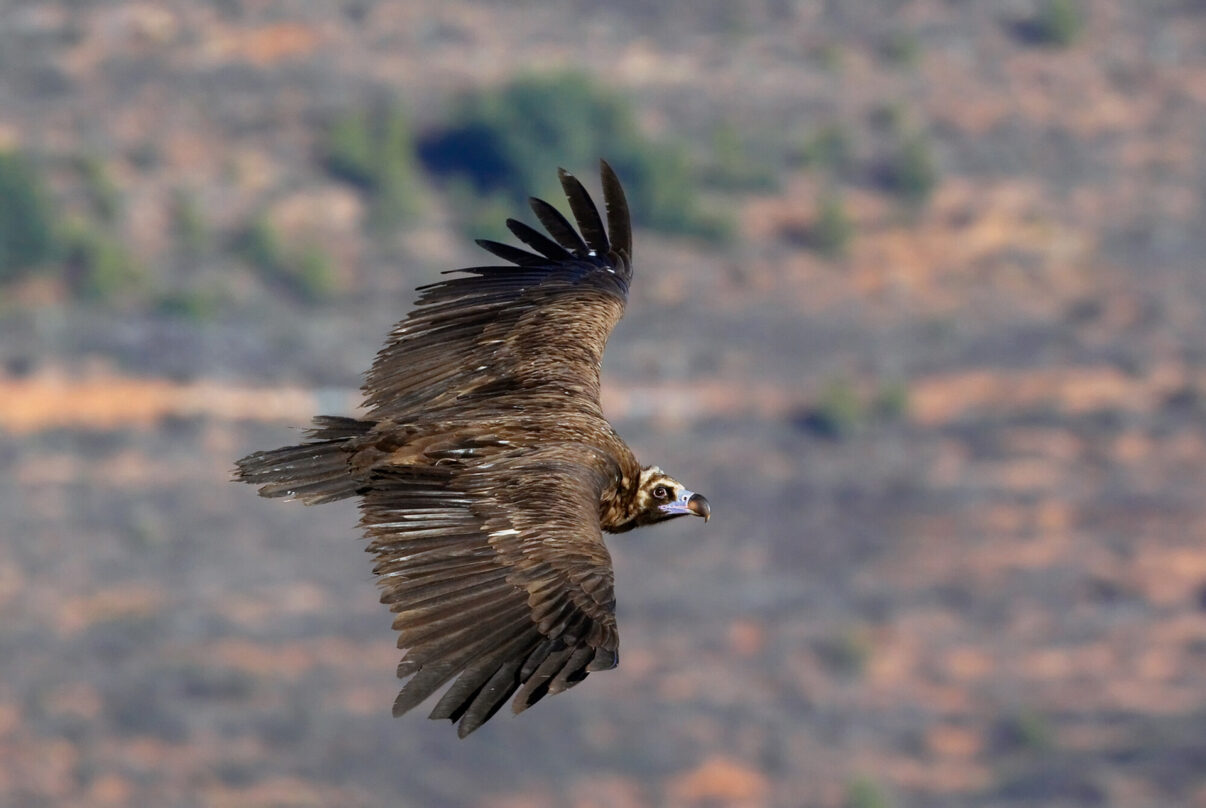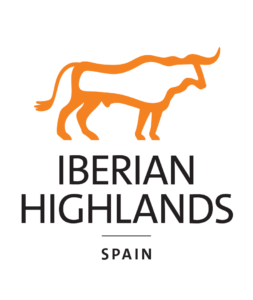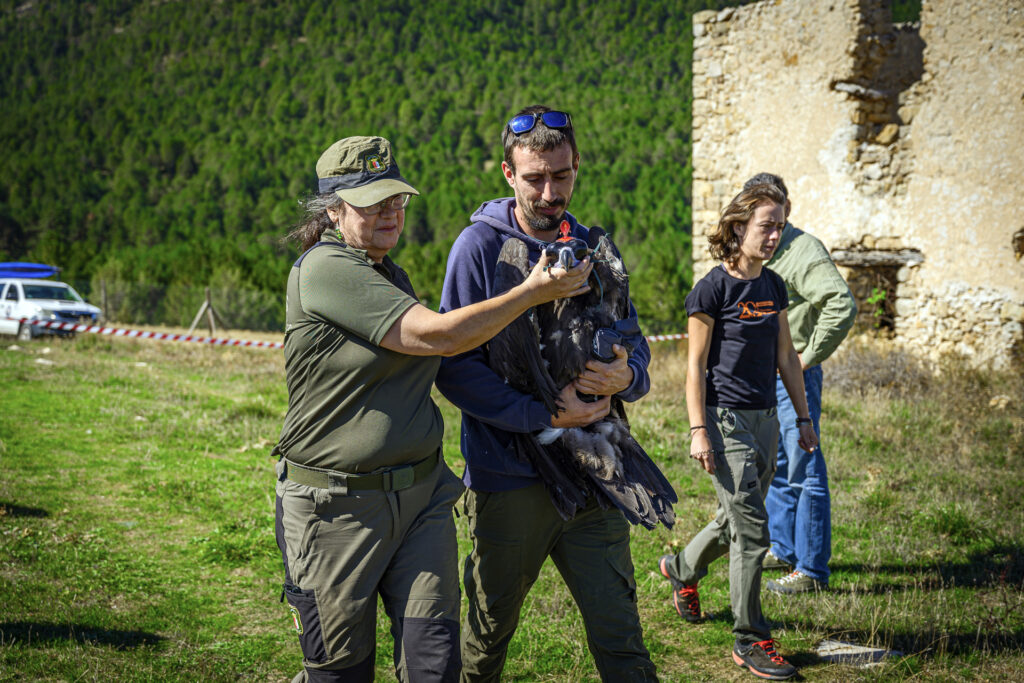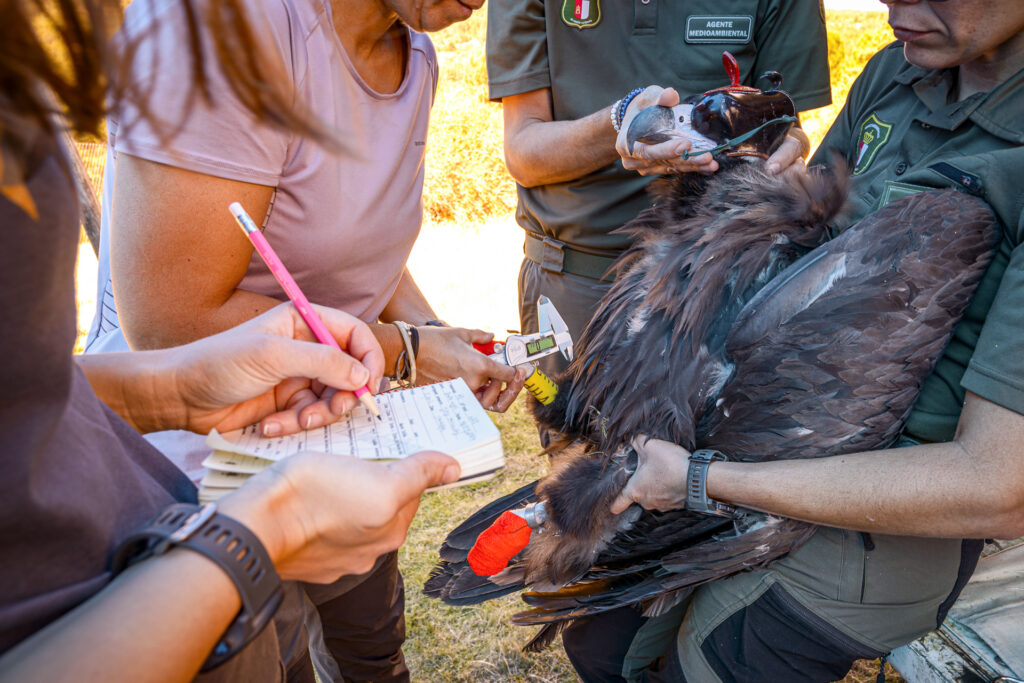Four cinereous vultures have just been released in the Iberian Highlands in Spain, as part of an ongoing reintroduction programme. The restoration of this iconic and ecologically important bird as a breeding species will enhance the health of the rewilding landscape and support nature-based economic development.

Towards a wilder Iberian Highlands
 Four more cinereous vultures have been released in the Iberian Highlands rewilding landscape in Spain, as the latest stage in an ongoing reintroduction programme. Having been sourced from wildlife recovery centres across the Castilla-La Mancha region, the birds were housed in a specially built adaptation aviary located in the Alto Tajo Natural Park for several months prior to being set free. The return of this majestic keystone species to the Iberian Highlands will contribute to the realisation of a wilder and healthier Iberian Highland landscape.
Four more cinereous vultures have been released in the Iberian Highlands rewilding landscape in Spain, as the latest stage in an ongoing reintroduction programme. Having been sourced from wildlife recovery centres across the Castilla-La Mancha region, the birds were housed in a specially built adaptation aviary located in the Alto Tajo Natural Park for several months prior to being set free. The return of this majestic keystone species to the Iberian Highlands will contribute to the realisation of a wilder and healthier Iberian Highland landscape.
“This latest release is an exciting and significant step forward in the programme, bringing us closer to the recovery of the cinereous vulture in the Iberian Highlands,” says Rewilding Spain team leader Pablo Schapira. “These iconic scavengers play an essential role in the circle of life, while they enhance the value of the landscape for local communities by boosting nature-based tourism.”
The cinereous vulture reintroduction programme, which began in 2020, is run by the Castilla-La Mancha regional government and the Alto Tajo Natural Park, with work on the ground carried out by Rewilding Spain and Spanish NGO Terra Naturalis. With the latest release, 21 cinereous vultures have now been set free through the programme, which aims to restore a resident, breeding population of the birds in the Alto Tajo and Serranía de Cuenca regions. A total of between 40 and 50 birds will eventually be released.

Enabling breeding success
Unlike the griffon vulture, which nests on cliffs, cinereous vultures make their homes in the tops of trees. This makes the species sensitive to the degradation and disappearance of natural forests. The protected status of the Alto Tajo and Serranía de Cuenca forests mean the birds should have the necessary conditions to establish colonies.
The acclimatisation of the cinereous vultures in a local aviary helps the released birds settle in the area. More than 20 nesting platforms have been built in local trees, two of which have life-size decoys. To reinforce the connection of the vultures with the local landscape, six artificial feeding stations have also been established as part of the reintroduction programme. These are regularly supplied with the carcasses of domesticated livestock from local farms.
In an ideal world, vultures across Europe would feed exclusively on the carcasses of wild animals. However, a decline in wildlife populations means livestock carcasses are often a critical source of food. This is the case in the Iberian Highlands, where extensively grazed livestock far outnumber free-roaming wild herbivores such as deer. The Rewilding Spain team are overseeing the ongoing releases of wild and semi-wild herbivores, such as horses and Tauros, with the aim of increasing the supply of naturally occurring carcasses to the vulture species in the Iberian Highlands. In addition to the cinereous vultures, this also includes griffon and Egyptian vultures.

Positive signs
Next spring will be a key period for the cinereous vulture reintroduction programme, as it will be the first time that previously released birds have reached breeding age.
“This is the starting point for the birds to pair up,” explains Ángel Vela, Managing Director of the Alto Tajo Natural Park. “Several vultures have already based themselves in the local landscape, while some birds from existing colonies in other areas have also been spotted. This is a promising sign for the future, and we are keeping our fingers crossed for breeding success.”

Keeping track
A month before their release, the four cinereous vultures were tagged with GPS transmitters, which are very light, solar-powered devices that enable very precise tracking. These will allow the reintroduction team to monitor the movement and behaviour of the birds. The tagging was carried out with the support of Víctor García Matarranz, a specialist from the Ministry for Ecological Transition and the Demographic Challenge (MITECO), and his team.
GPS transmitters fitted to vultures already released through the programme have show that the birds have travelled widely across Spain. However, the majority continue to spend most of their time in the Iberian Highlands.

Invaluable support
Rewilding Spain’s efforts in the Iberian Highlands are supported by the Endangered Landscapes & Seascapes Programme, Cartier for Nature, and Arcadia.
Rewilding Europe’s work in our rewilding landscapes is supported by a wide range of highly valued partners. We would particularly like to acknowledge those providing core funding – notably the Ecological Restoration Fund, the Dutch Postcode Lottery, WWF-Netherlands, and Arcadia. Their longstanding support plays a critical role in enabling us to deliver and scale up rewilding impact.
